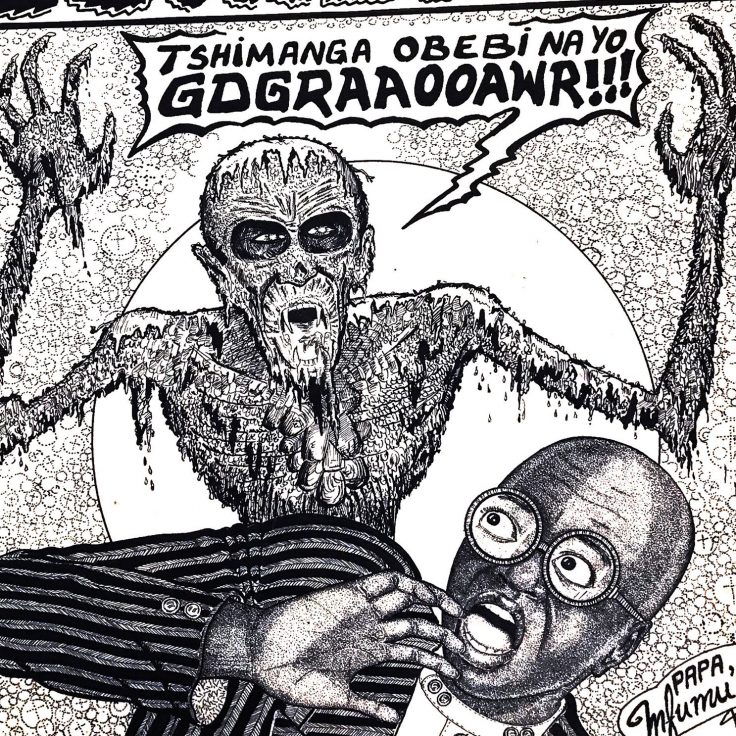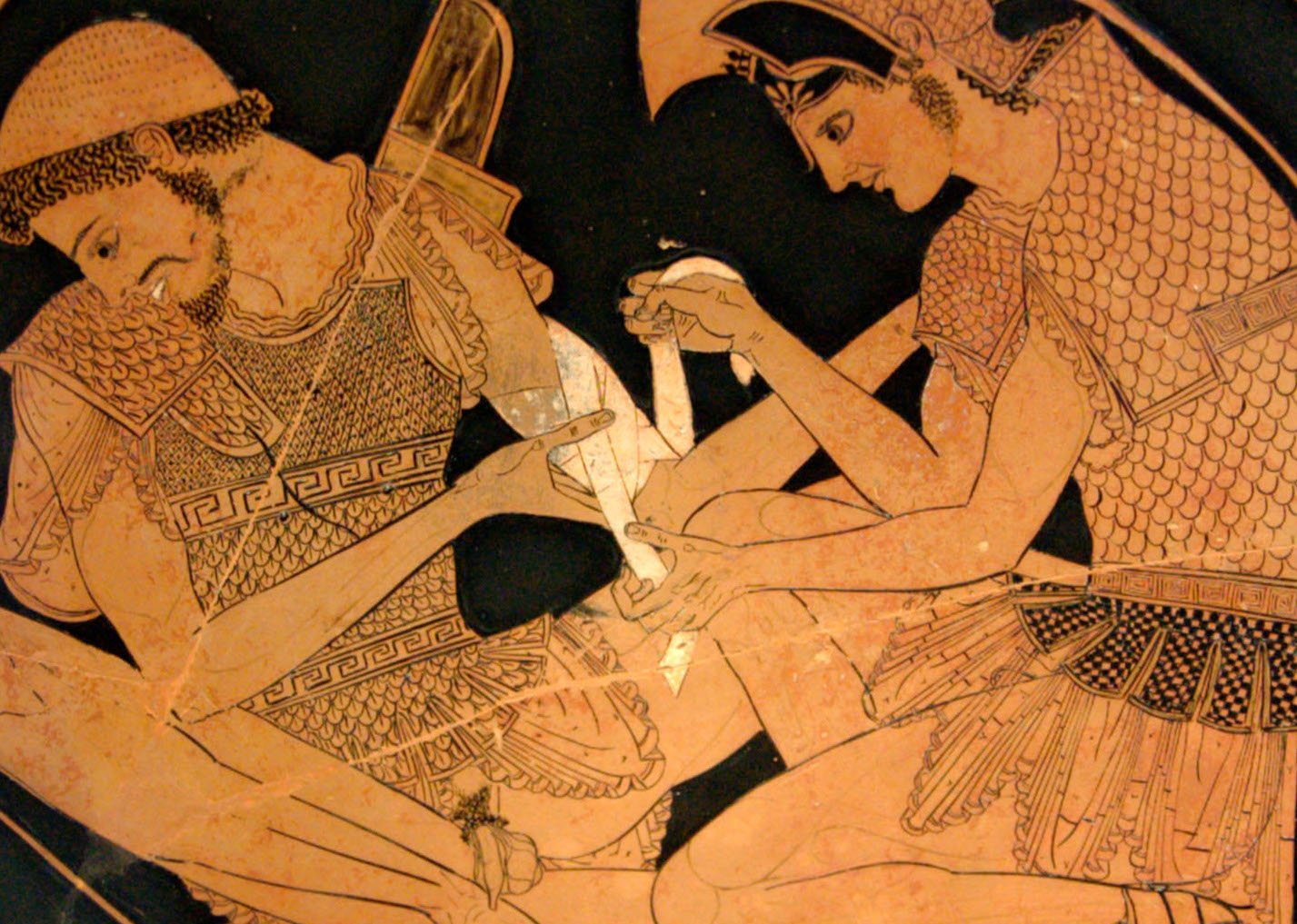
CSI Troy — Before There Was Hippocrates, There Was Homer
A classicist chases down the origins of early anatomical description in Homer’s Iliad.
On a Friday afternoon in February, Kenneth Silverman, a PhD student in UF’s Department of Classics, stands in front of an audience of medical doctors and historians at the Southern Association for the History of Medicine and Science in Augusta, Ga., speculating on a gruesome battlefield injury reported to have taken place in Asia Minor more than 3,000 years ago. The victim of the injury was a Trojan soldier named Amphiklos who had charged at an enemy commander, Meges Phyleides, only to be skewered in the thigh by a spear.
As described in lines 313-16 of the Iliad, things didn’t end so well for Amphiklos:
And Phyleides, when he’d spotted Amphiklos running towards him,
was the first to strike, reaching out his spear towards the upper-part of Amphiklos’ leg,
where the thickest human muscle lies: and his tendons (artery?) [νεῦρα] were completely
severed by the point of the spear, and darkness covered his eyes.
Silverman, reads the lines aloud in the thrilling meter of Greek epic poetry, dactylic hexameter, and pauses. He focuses on the bard’s detailed descriptions of anatomy and on a single, telling word: νεῦρα, or neura. Elsewhere in the Iliad, this plural noun is used to mean “tendons,” but in this passage, neura most likely refers to the femoral artery, whose severing brings death within minutes (“darkness covered his eyes”). What did Homer’s apparent confusion of “tendons” and “artery” signify?
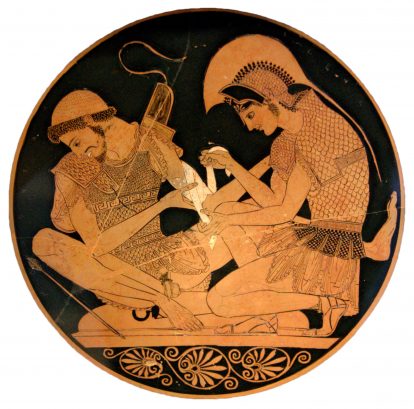
The answer, Silverman explains, was in the Iliad’s historical context. It was written hundreds of years before Hippocrates and the Hellenistic philosophers who laid the groundwork for the scientific method. In fact, he says, “a lack of discrimination in Homer among terms referring to arteries, veins, sinews, and the spinal cord reflects an early stage of Greek anatomical knowledge.” Although Homer lacked separate terms for tendon and artery, his meticulous descriptions of battle wounds, stabbings, and even beheadings reveal a keen eye for how the human body works — and shed light on the mysteries of pre-Hippocratic thinking.“On balance, Homer is probably simply describing torn tendons,” says Silverman. “Amphiklos’ neura were snapped, and he died.” And that error in identifying the cause of the warrior’s death represents a key stage in early Western thought: “In ancient medicine and popular belief, leading up to early modern times, tendons and nerves were associated with each other,” says Silverman, “both described with the same Greek and Latin word [neuron/nervus], and both thought to contain a person’s ‘life force’ — the vigorous tautness that holds a person together.”Homer’s concept of the neura “was used for centuries before Hellenistic physicians discovered the nervous system and borrowed the term to describe its constituents,” says Silverman. In turn, “many modern medical terms still owe their roots to words that first appear in the Iliad and Odyssey, earning Homer a place in the early history of science and medicine.”
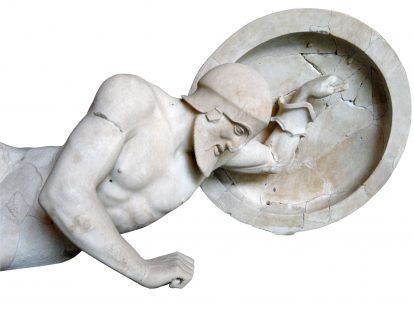
A sculpture of a fallen warrior at the Temple of Aphaia on the Greek island of Aigina.
Silverman is interested in the bard’s shaping of the ancient Greek language, which was in a molten state in the 8th century BCE, much like English was at the time of Shakespeare. Homer’s keen sense of delight in the physical world was transmitted directly to listeners through vivid descriptions and onomatopoeia (words that sound like the things they describe).
One of Silverman’s favorite Homeric words refers to movement and translates to “trembling with leaves.” Another is a complex color word — the “deep blue of depth” — to describe water. And, of course, there is the famous Homeric reference to the “wine-dark sea,” a hard-to-visualize color that Silverman translates as “wine-faced.”
Silverman’s father is a microbiologist at the Cleveland Research Institute, a connection that led to Silverman working as a research student in the mid-2000s at the Cleveland Clinic, where he witnessed a laminectomy surgery for lumbar spinal stenosis (removing plaque from around the dura of the spine). Although he wasn’t thinking of the Iliad then, that experience came in handy for translating some of the epic poem’s “excruciating lessons in anatomy.”
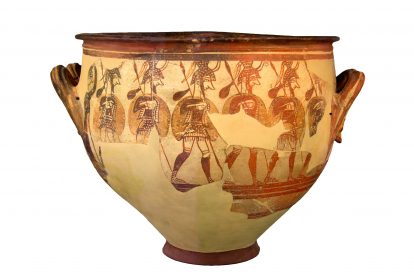
As a final example, Silverman recites a passage in which Achilles rampages through the Trojan army and beheads the warrior Deucalion. The lines swell and fall over themselves as Deucalion’s head and helmet fly off together, (de)capped by this arresting detail: “marrow splashed [or, “spurted”] out from the vertebrae / and he lay splayed out on the ground.”
Splashed?
Silverman smiles: “Well, I know from having witnessed a spinal surgery that spinal fluid does not splash out. The medical doctors at the Augusta conference confirmed this. However, doctors have told me that blood from a beheading would gush out — perhaps even twelve feet in the air. Splashed conveys the effect.”
Neuron, nerve, phlebitis: these are some of the established medical terms that have their origins in Homeric verse. As Silverman observes, Homer may not have thought of human anatomy and injuries in a scientific way, “but in his ability to find just the right words to describe these phenomena, he took a first step towards explaining them.”
All of the poems in this article were translated by Kenneth Silverman.
